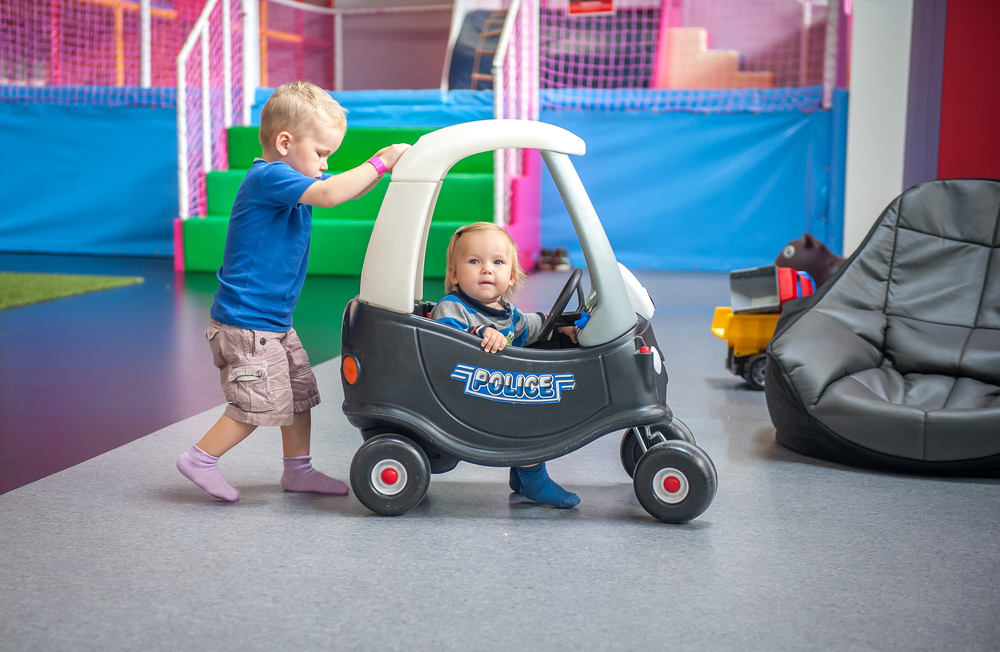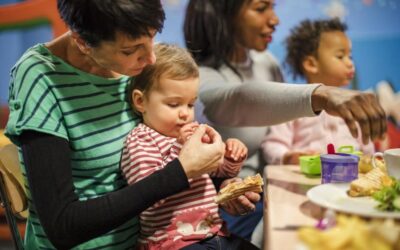Create an optimal environment for learning and play with well-designed educational spaces
Child care centers or family day homes are often a child’s first exposure to a dedicated learning environment. During these formative years, it’s important to inspire intellectual curiosity by creating a fun and stimulating space. However, top-notch organization is also essential. Create an educational environment that encourages growth, development, and creativity while also facilitating your day-to-day tasks, and you’ll have a child care program that operates both as a safe place to learn and play as well as a professional environment.
Program design
The design of your program has an effect on everything from your productivity to the behavior and interest of the children.
The ideal setup has clearly defined spaces of where materials belong; this not only helps you as a provider, but also helps children learn how to independently locate, clean up, and handle toys and supplies responsibly.
Creating different interest centers that encourage children as they move through stages of play or types of activities helps define spaces clearly. As you’re planning your layout, think of how each area might affect others around it. For instance, a dramatic play area may be a poor choice to place next to a quiet space for reading or coloring. Sketch out your ideas on paper to evaluate the flow of movement and the potential for problems.
Safety is one of the most important factors. Make sure you choose low, child-sized furniture, have locked cabinets or closets for toxic or messy supplies, and eliminate any hazards such as sharp corners, exposed plugs or outlets, or unsecured exits.
Interest areas
Different learning centers can help maintain children’s interest throughout the day and are designed to help them learn through play. Creating separate, thoughtfully designed, well-stocked interest areas promotes independence, encourages involvement, and helps with decision making. Here are some suggestions for categories that are particularly helpful for infants and toddlers.
Literacy center
Developing pre-reading skills is an important part of laying the foundation for an appreciation of reading. Create a space that is cozy, relaxing, and inviting, preferably in a quieter area of the room. Add a rug, age-appropriate chairs, a reading fort or play tent, and well-stocked bookshelves or baskets of books. This area can be where you hold story time, but should also encourage independent exploration.
Dramatic play
Pretend play is a fun activity for children that also encourages social skills. Ideally, this would be a larger area that can accommodate noisier play. Include dress-up items here, and toys that allow children to play house, like a toy kitchen, play food, pretend tools, or dolls. Children can practice problem-solving, negotiating, communication and cooperation through dramatic play.
Block area
Creative, constructive play can be accomplished through simple toys and materials such as blocks. Due to its need for space and tendency to be loud, setting the block area up near the dramatic play area is a good idea. Allow children to play with the materials in either space. Ideal flooring is flat and smooth, and shelves and/or large bins are essential for easy cleanup time.
Art space
Children love art, and it’s a great way to encourage creative expression. Positioning an art area near a sink can save you from future messes, and you may want to limit this center to a space with vinyl flooring, if possible. Have easels and dry erase boards available and a variety of materials in different drawers, bins, or containers to inspire supervised free-choice play.
Science and math center
Allow children to observe, experiment, classify, and combine in an area that helps children learn science, math, and logic. Available toys may include age-appropriate materials such as sturdy magnifying glasses, counting and sorting toys, and natural specimens such as plants, rocks, or fossils.
Music and movement area
Help children learn more about music, rhythm, motor skills, and collaboration with an area that encourages experimenting with sound and movement. An open area with storage options for kid-friendly instruments is the perfect setting for this center.
Children (and their care givers) spend a lot of time in their learning environments. Take a careful look at your plan, your available area, the materials you plan to incorporate, and the children in your care to design a space that will encourage them to grow and bloom.
The Virginia Infant & Toddler Specialist Network helps improve the quality of care for infants and toddlers through extensive resources, services, and education for caregivers. Learn more about how we can help you improve the standard of care.




